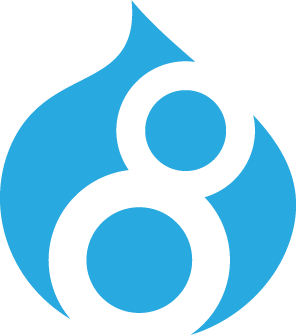The Drupal Community is supported by an active and diverse group with more than 1,136,828 Drupalers in 229 countries speaking 180 languages. The launch of Drupal 8 is going to be more than just a new software iteration, it will provide over 200 new features and improvements. So let’s take a moment and look at how Drupal 8 will impact development in 2015.
What makes Drupal 8 special?
There are a variety of advanced technologies that make Drupal 8 significantly more adaptable to use cases than before, but really two improvements stand out. First is the significant re-architecture around the Symfony2 framework. This takes advantage of a number of object oriented programming best practices and provides a completely new routing and context system. Multilingual sites will be easier to build and use with better support in core and a much improved translation interface. Drupal 8 will also include countless other user interface improvements throughout the platform.
Who is it going to benefit from Drupal 8?
In a nutshell, everyone. Anyone building complex applications, writing application programming interfaces (APIs), or looking for a significantly improved mobile experience will benefit from Drupal 8’s release.
What is Drupal 8 lacking?
Drupal 8 framework is still new to many developers and presents a significant learning curve for even the most established Drupal developers. However, the framework makes it easier for new programmers to come into the community. Drupal core simply cannot meet all possible use cases out of the box and there are some features and types of functionality that will always require additional contributed modules or custom code. The key, as always, is to choose contributed modules wisely to prevent conflicts and ensure maintainability.
So how is Drupal 8 going to make a difference in development?
Accessibility: Drupal 8 provides centralized control for rich Internet applications and is the most accessible version of Drupal. Websites will have the ability to benefit the visually impaired users with new features such as ARIA Live Announcements, that will give module developers the ability to create direct output to screen readers. TabbingManager will constrain tabbing to unneeded elements providing a functional workflow for users. CKEditor will also be another addition to make HTML editing even simpler.
Symfony2 Framework: With the use of Symfony2 framework, Drupal 8 becomes object oriented. It takes advantage of a stack of standard components used throughout a variety of frameworks, making it easier for new developers to learn Drupal and enabling them to build more powerful applications around it.
Multilingual: With Drupal 8, it becomes a lot easier to build multilingual websites. There are improvements to language maintenance options, site translations and easier-to-customize settings. This benefits both end users and developers at the same time.
Twig: The flexible, fast and secure template engine for PHP called ‘Twig’ is now a part of Drupal 8. Twig provides a greater separation between logic and display, and is tightly integrated with Symfony’s class-based approach to programming. This also helps improve security, since PHP code can no longer be embedded directly in templates. It also helps lower the barrier to entry for front-end developers new to Drupal, using a syntax that will be at least somewhat familiar to developers with experience with Handlebars or other similar systems.
Mobile First: For the first time, Drupal will make it easier to administer on a mobile device, using only core themes and modules. All the built-in themes in Drupal 8 are responsive. Mobile website and app is now the way of life.
These are just a few highlights about the Drupal 8 release. In the end, Drupal 8 will provide a better experience for end users, developers, and clients as well as help expand the Drupal Community. Such innovative improvements continue to make Drupal the best open source CMS option available in the market.
Sean Robertson is a senior developer at DOOR3. DOOR3 designs and builds enterprise business applications for web, social and mobile media and is based in New York City.
Image Courtesy of drupal.org






